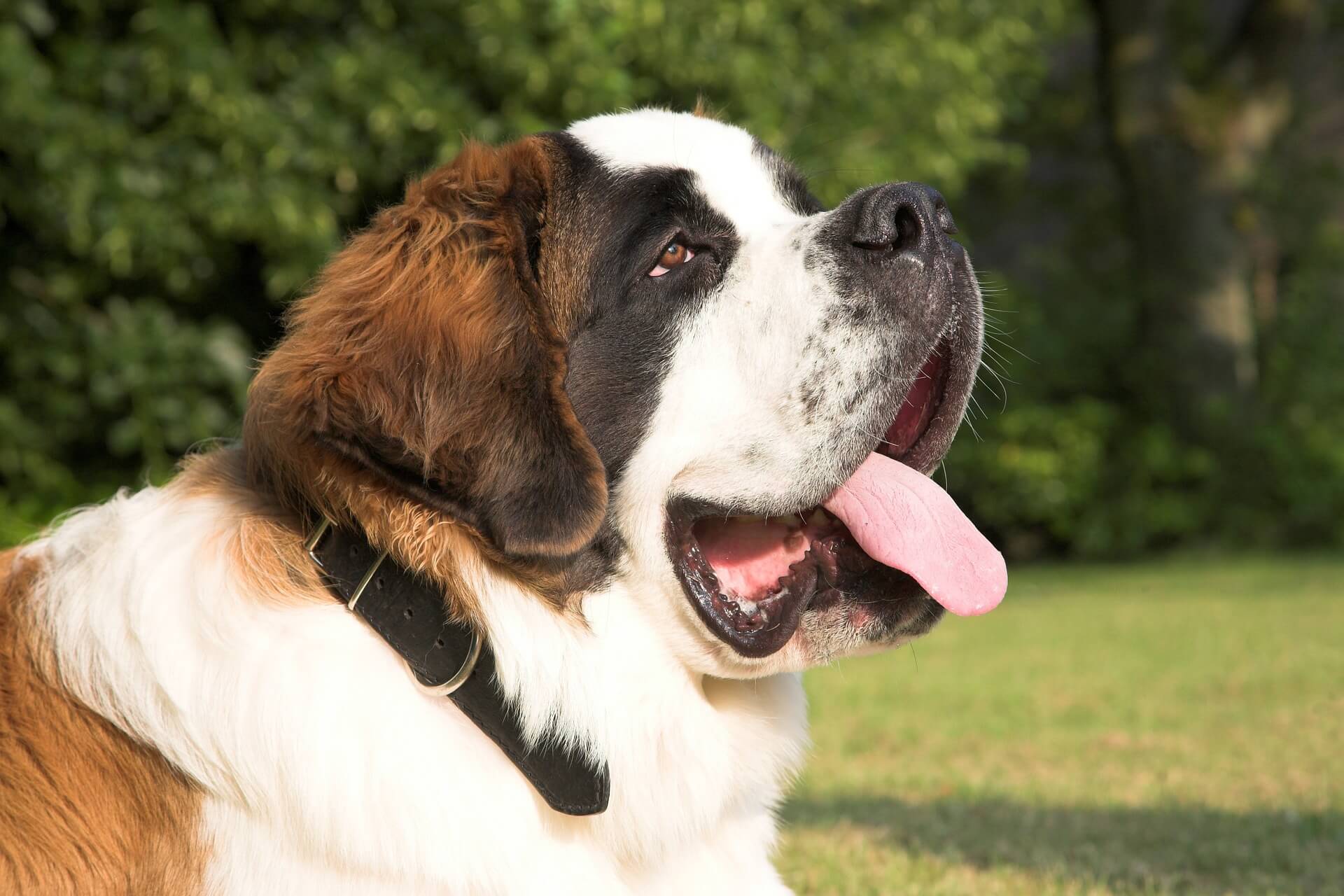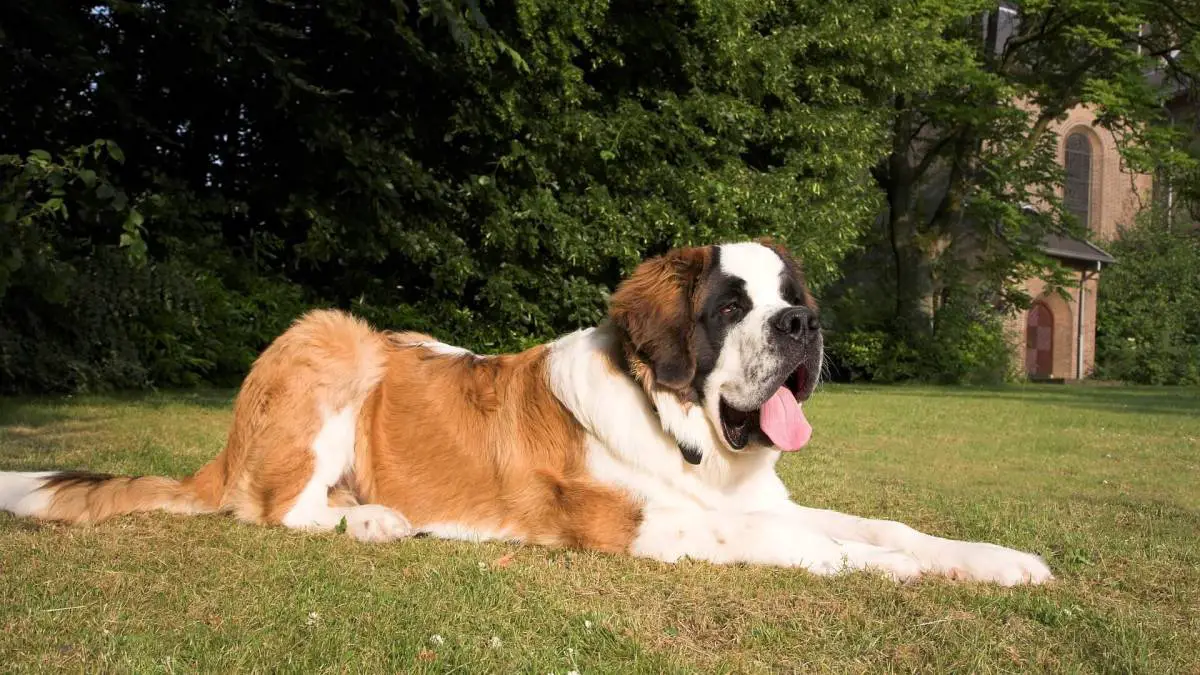Saint Bernard - How They Became Search and Rescue Dogs
03.05.2020.
Saint Bernards are lovable, extremely calm, and peaceful dogs. They originated from the Sennehunds, who are Swiss mountain or cattle dogs. They were named after the famous Italian monk by the name of Bernard of Menthon and were bred originally by a hospice of the Great St. Bernard Pass located on the Italian-Swiss border.
The hospice was placed in particularly difficult terrain nearly 2,5 kilometers above sea level. Needless to say, life on such great altitude is a lot harder than what we are generally used to, and dogs that lived and worked there had to develop special traits and characteristics.
Saint Bernards might make great rescue dogs, but if they are not on duty, they love to lounge and nap. They are also huge, so if you don’t want to give up your couch or your bed, get them their own comfy dog bed. The Furhaven Pet Dog Bed might be ideal for your gentle giant.
Saint Bernards are extremely friendly and patient dogs. They get along great with children and are known to be particularly careful when interacting with them. It is almost as if these dogs are aware of their size and understand how strong they are and how easily they could hurt small children.
Their friendliness comes particularly handy since they were originally bred for search and rescue missions in their native Alpine homeland. When thinking about Saint Bernards, the first thing that pops into our mind is a dog that has a small and iconic barrel around his neck. We can thank Sir Edwin Henry Landseer for these mental pictures since he popularized this “barrel-carrying Saint Bernard”. Sir Landseer is mostly known for his paintings of dogs, and he used Newfoundlands as subjects more often than he used Saint Bernards, but his paintings of these dogs reached legendary status.
Search and rescue work of Saint Bernards
The oxygen is rarer at such altitude, so these dogs needed to develop a strong heart and big enough lung capacity so that they could be able to work long hours and not get tired quickly.
They have also developed or, better yet, were selectively bred to have double coats that protect them from extreme weather conditions common in the mountains. Their search and rescue missions mostly involved them working in extremely harsh conditions such as deep snow and snowstorms, searching avalanche debris, and hiking extreme distances to find the unfortunate souls that encountered life-threatening situations in the Italian or Swiss Alps.
Some of their ancestors were of the scenthound types, and that is a very smart thing the creators of these dogs did since Saint Bernards had to rely on their scent to find missing people. The original Saint Bernards were a lot smaller, about the size of modern-day German Shepherds.
They reached their “modern” size as the breeding and kennel clubs started focusing more on their looks than their working ability. The second important role in the look of today’s Saint Bernards can be attributed to the Newfoundland dogs that were brought to the Alps and crossbred with the original Saint Bernards. A big problem for the survival of this breed was the actual nature of their work. They worked in tough and extremely dangerous conditions. Many of the breeding dogs were lost during the 18th and 19th centuries due to avalanches and other accidents that occurred in their line of work. Eventually, other breeds had to be introduced, and at that time, their breeders decided to go with the Newfoundland.
Saint Bernards inherited Newfoundland's long and thick fur that started slowing them down in their search and rescue missions, and little by little; these dogs stopped being used for their original purpose.

First Saint Bernards
The monks of the St. Bernard hospice got their first dog sometime in 10 years between 1660 and 1670. These monks started picking and carefully breeding these dogs and they were picked based on their working ability. They had little to no interest in their looks; they were only interested in their capabilities, keen sense of smell and resilience. They perfected the working Saint Bernard dogs around 1750, and for the next 150 years, these dogs saved the lives of troubled travelers in the famous Swiss pass. It was said about the original search and rescue Saint Bernards that they could easily catch the scent of a man buried in over 2 meters (7 feet) of snow.
It is well-known that the first hour after an avalanche happens is the most important. If the dog does not manage to find a survivor in an hour, it will most likely find a body. After such a horrifying event happened, the monks used to send a pack of two or three St. Bernards to start their search and rescue mission. The dogs alone were a lot faster in searching than when being led by a human. They would catch the scent and start digging through the snow, ice, and debris until they eventually reached the unlucky person who got caught. Interestingly, these dogs didn’t carry a barrel of brandy around their neck. Some of the monks admitted that they used to put the barrels around these dogs to amuse the tourists passing through their hospice. Later that image was popularized by the aforementioned Sir Edwyn Landseer.
Saint Bernards’ skills in search and rescue missions reached legendary status, and these were the first dogs that came to mind when people were thinking of S&R mountain dogs. There is one Saint Bernards we would mention that is considered the best of the best in the context of search and rescue. A Saint Bernard by the name of Barry, who lived in the Saint Bernard monastery, reportedly saved the lives of over 40 people. After he died in 1812, his remains were put in the Natural History Museum in the city of Berne, Switzerland.
A big problem occurred for these dogs between 1816 and 1818. The weather was extreme at that time, and a lot of the breeding Saint Bernards died during their rescue missions. They nearly went extinct, and only a few dogs remained in the monastery. The monks got worried that their beloved dogs would get wiped out and end their centuries-old companionship. They spread the word around the nearby towns and villages, and the people heard them. They sent their local Saint Bernards to the monastery so that their noble work could continue and thus ensured the survival of the breed. Unfortunately, at that time, Newfoundland was introduced to the gene pool of Saint Bernard, and a different set of problems came to life.
In the end, the dogs at Saint Bernard Hospice helped save the lives of over 2000 people. Their last recorded use as search and rescue dogs were in 1897 when a Saint Bernard located a boy that fell into a deep crevice and nearly froze to death, only to be warmed and woken by this dog.
Today Saint Bernards are beloved around the world for their adorable looks and great character, which makes them one of the best family dog breeds.
World Dog Finder team







Share